Today, one cannot imagine life without the Internet. But sometimes because of the difficult terrain, the lack of conditions and the remoteness of the place of residence, it is difficult to connect to the World Wide Web. In this case, satellite Internet is indispensable. Do it yourself with your own hands just configure it. If something does not work, you can always call a specialist.
Satellite Internet: what is it
The named form of the Internet represents access to the network via satellite. In this case, the signal from its terminal is fed to a special antenna, in which the receiver is built-in, and only then to the computer. It moves through the network at a fairly high speed.
Equipment for setting up satellite Internet is not cheap, but the quality fully justifies all costs. You can connect satellite Internet yourself, for this you just need to buy a set of equipment and follow the instructions.
All necessary programs are installed on the computer. And after the installation of the equipment, it remains only to test the equipment, choose a provider, tariff and pay for the service.

Types of satellite connection
The satellite broadcast Internet is divided into two types: one-way and two-way. You can set up one and the other satellite Internet with your own hands, or you can call a specialist who will do it much faster.
In one-way connection, the incoming signal comes from the satellite, and the outgoing - via terrestrial telecommunications or via the mobile Internet. The speed of a one-way (asymmetric) Internet is not so high compared to a two-way, but the cost of tariff plans is democratic. This is due to reduced return traffic costs.
In a symmetrical Internet (two-way) or VSAT, the incoming and outgoing channels pass through the satellite. Communication is via a modem transmitter tuned to a signal. The satellite dish serves here as a teleport, transmitting information at a speed of 1 Mb / s. This Internet is expensive, but the quality here is excellent.
Due to the high cost, two-way is rarely used, mainly for organizations located away from large cities. The asymmetric option is more popular and available for ordinary subscribers.
Operating principle
If you connect satellite Internet with your own hands, the principle of its operation will be as follows. Using a proxy server or virtual VPN network, the user sends a signal to the provider, which redirects it to the satellite. The received stream is amplified several times and enters the satellite dish receiver. As a rule, each satellite covers a certain part of the globe, which is equal to an area of several thousand square kilometers. In this case, the flow rate increases toward the center, and weakens towards the edge.
The receiving head or convector on a plate is connected to a DVB-card located in the PCI slot of the computer. From here, the converted signal is sent to the user. A satellite can have several providers. Before connecting to the Internet, you must select the satellite and the appropriate Internet provider.
One-way Internet Equipment
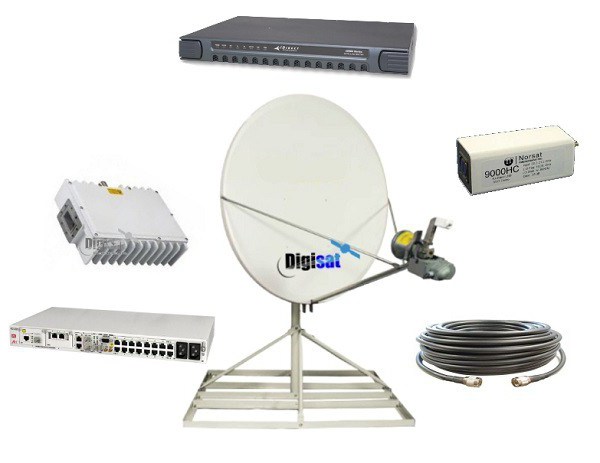
To connect one-way satellite Internet with your own hands, you need to purchase a set of equipment. It usually includes:
- PCI / USB DVB-S / S2 card. It differs as fast as possible stream transmission from the satellite. Decodes a signal and transfers it to a personal computer.
- Satellite antenna. Her choice depends on the provider and the satellite from which the signal is broadcast.
- Converter.It is in the focus of the satellite dish and is receiving a signal. Redirects the received stream to a DVB-card, in which it undergoes further conversion. Often, Ku-band converters with linear polarization are used. In rare cases, an element with circular polarization is used.
- Coaxial cable. Connects the converter and the DVB-card. To do this, use special connectors with an F-connector.
- Modem or phone. It is used as an outgoing channel with one-way technology. It can be a USB modem with EDGE (GPRS), fiber optic or ADSL telephone line, dial-up dial-up connection.
The finished set of equipment can only be installed according to the instructions. By the way, a device for transmitting an outgoing stream is purchased separately.
Equipment for two-way
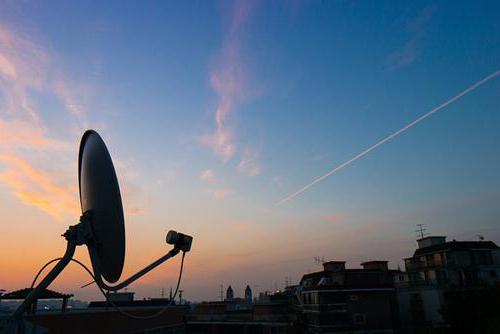
When the VSAT is connected, data reception and transmission occurs only via satellite channels, and the need for additional ground sources is no longer necessary. If you install the two-way satellite Internet with your own hands correctly, then its work will not be affected by weather conditions. To install, you must purchase:
- Ku-band satellite dish. It receives and transmits a signal. The standard diameter is 1.2-1.8 m.
- Blocks The transmitting BUC signal and the receiving LNB stream, which are mounted on the irradiator of the satellite dish. They are universal and suitable for all types of antennas. They are not associated with a satellite terminal.
- The terminal is responsible for receiving and transmitting satellite stream.
Two-way Internet allows you to develop high speed data transfer. It works regardless of ground equipment. A significant drawback is only its high cost.
Benefits
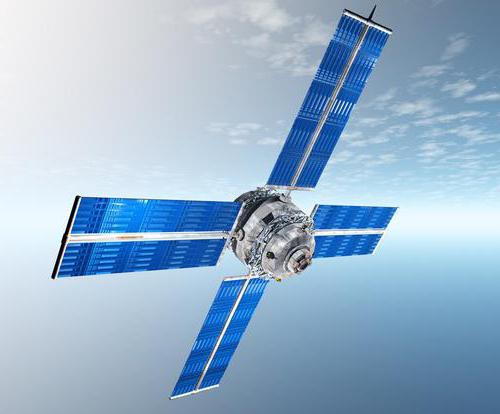
It’s not difficult to install free satellite Internet with your own hands, just read the instructions that come with the equipment. The main advantages of this connection are:
- low traffic price compared to GPRS and DSL;
- good speed even with poor performance of the land line;
- ability to develop higher speed than terrestrial types of connection, such as GPRS and DSL;
- the ability to connect to satellite TV;
- Connection to the Network at any point in the area related to the satellite coverage area;
- quick commissioning of equipment;
- ease of use.
You can feel all the positive aspects of using satellite Internet only with the independent use of this service.
Negative sides
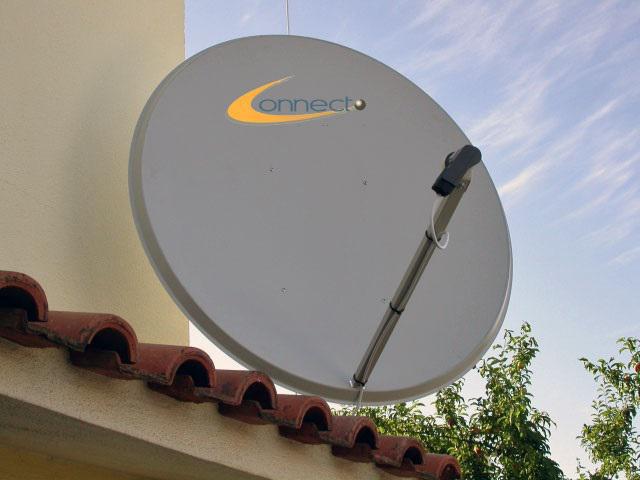
Do-it-yourself free satellite Internet can be connected in a matter of hours. But this type of communication has its drawbacks:
- the receiving antenna must be strictly oriented to the satellite, otherwise the signal will stop;
- due to the great distance from the earth (somewhere 36 thousand km) there is a large ping;
- terrestrial views of the Internet are much cheaper than satellite, especially in large cities. The cost of maintaining the satellite is quite high, and part of them falls on the shoulders of subscribers;
- some satellite companies present an IP address that does not correspond to their place of residence, which causes a malfunction in the search engines.
Despite the above disadvantages, satellite Internet remains in demand, and the equipment necessary for its transfer is constantly being improved, which creates a great future for it.
About satellite providers
It’s not difficult to set up satellite Internet and TV with your own hands, but at the first stage you should decide on the provider who will provide the service. The most popular are:
- SatGate
- "Rainbow Internet";
- "Tricolor-Internet";
- Starblazer
- Skyds
- Lansat;
- "STV";
- Gazprom Space Systems;
- Helios;
- OpenSky
- Spectrumsat;
- GxSat.
All of them work on satellite sources DVB-S or DVB-S2. This type of connection allows you to carry out the most popular operations - surfing, sending and receiving data, viewing video files. For legal entities, there are individual connection schemes, IP addresses are allocated.
Basically, all providers turn in their work to such satellites as HorBird, Sirius 2, Astra 19.2, Eutelsat, Astra - 2C, Yamal-200-2, etc. Here there are a variety of tariffs for speed and price. There are limit and unlimited. To choose the right provider, you need to determine what function the Internet should perform.
How to connect your own free satellite Internet

Do-it-yourself satellite Internet setup is carried out in several stages. First, a satellite dish is mounted on the wall or roof of the building. The antenna mirror is oriented to the satellite. The compass will help you choose the right position, and the satellite coordinates are determined using the Satellite Antenna Alignment program.
Service is installed free of charge and in advance of equipment installation. The program records the exact coordinates of their location and the location of the satellite. The service provides the angle, azimuth and other data necessary for the correct orientation of the antenna.
Subsequently, the DVB-card is inserted into the PCI-slot of the computer. It acts as a satellite modem, receives, converts and transmits a signal.
After the equipment is installed in the system unit, it starts debugging. This is a complex process that takes a lot of time. To do this, one person is in front of the computer and monitors the signal from the satellite, which the program will show when it is detected, and the other adjusts the position of the dish.
If the adjustment is carried out by one person, then in the program he can choose the sound notification function, and he will align the antenna. Instead of a DVB-card, an external card is installed in the laptop, which is connected via a USB connector. After installing all the components, the equipment is tested.
To completely solve the question of how to make satellite Internet with your own hands, a professional takes about two hours.
Do-it-yourself free Internet satellite dish: myth or reality?
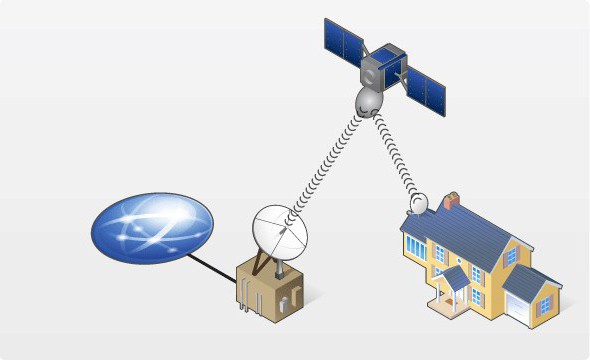
Free Internet through a satellite dish can be configured independently, if you have certain knowledge. But for these purposes, you will need special equipment.
The satellite does not transmit a signal to any one device, but sends a stream to all devices capable of receiving it. Subscribers paying for the service receive already filtered information corresponding to the client’s request. Alien traffic bypasses it.
Those who want to use satellite Internet for free should take into account that this type of connection will have a very specific format. There will be a lot of unsystematic traffic, work with which will cause certain difficulties. And although there are filters that can select the necessary files in this situation, this kind of connection is unlikely to be fun and will allow you to enjoy all the features of the Internet.
About tariffs
After you have connected the Internet through a satellite dish with your own hands, you should decide on the provider and tariffs. All tariffs are divided into the following types:
- with payment for the amount of consumed traffic;
- conditionally unlimited, where a certain amount of traffic is already included (excess of the norm is paid extra);
- unlimited, having a fixed subscription rate;
- for legal entities.
At night, the Internet is cheaper than during the day, and can be unlimited. Each subscriber in his personal account is given the opportunity to independently manage services, increase speed, switch to another tariff plan.
With a one-way type of connection, an additional charge for the outgoing stream may be charged. The cost of incoming traffic for 1 Mb fluctuates around 0.5-1.5 rubles. The price of an unlimited tariff, depending on speed (from 500 Kb / s to 4 Mb / s), varies from 500 to 1200 rubles.
Two-way satellite Internet will cost more, but the data transfer speed here is much higher and reaches 10 Mb / s. The monthly subscription fee ranges from 600 rubles. up to 20 thousand rubles
Cost of equipment
You can also connect satellite Internet to a private house with your own hands.The price of equipment using asymmetric technology, together with a modem for the outgoing signal, here will be about 5 thousand rubles. Ready-made kits are more expensive. The price of finished equipment for the two-way reaches 30-70 thousand rubles. Each kit contains a subscription to a specific provider.
Due to the large number of wireless networks, satellite Internet is losing its popularity. However, in those regions where it is not possible to use the services of ground operators, it remains the only alternative.








